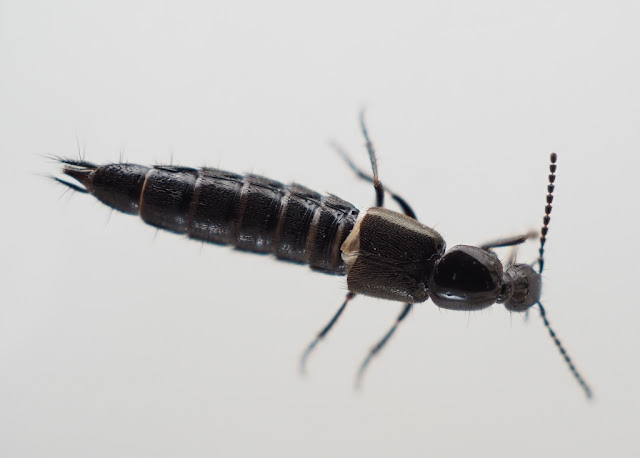The snow went quickly and it warmed up, warm enough to walk at Yesnaby without a coat, that is warm.
 |
| Warm and sunny enough for Chrysolina latecincta (intermedia). |
Strange this patch birding thing. You take two trips out a day and then on a single walk you get two species new for the year and the difficult to see Kestrel.
An evening stroll down the track with the dog and I glimpse a large raptor slip off a fence stave and go behind a hillock. I caught a glimpse of red in the wing so I was pretty sure it was a tagged Buzzard. It eventually showed itself as that. As I walked on a small brown falcon powered past and ended up on a electric pole about a klick away. Female Merlin, very nice. I scanned across with the scope to the next pole and there was a male Kestrel. Merlin has got pretty scarce here of late, the last one was in the last days of 2022.
Siskin was new for the year at the end of March and the Water Rail made several appearances on the camera trap. Redwings and Fieldfares are a trickle now, but there are still hundreds of Pink-feet, down at Bosquoy mostly.
I finally found the Raven's nest today. The pair had been hollering at me for a couple of weeks but I could not find the nest, or even think where it might be - hidden in plain sight. Looks like the female is sitting now which I would think would be quite late for Ravens.
A Bonxie flew over Hyval when I went down to do the pony. Nice to see one again.
And lastly, I went light trapping and three traps caught three moths, that's three moths total, not three moths each. Agonopterix ciliella/heracliana, 2; Common Quaker, 1.
 |
| Agonopterix ciliella/heracliana. |
 |
| Common Quaker. |
The grass clump cutting and searching has continued and continues to be rewarding with various nice things being extracted. Two more wee Hymenopterans, these are worth looking out for as they are quite distinctive, once you know what they are! Many thanks again to DN and to PV for their identifications, and confirmations.
 |
| Trichopria nigricornis. |
A very tiny, 2.2mm, Diapriidae, the wings reach just to the large tergite (T2) so it appears wingless at first glance. The key is Nixon 1980 freely downloadable from the RES.
 |
| Cyrtogaster vulgaris. |
This is a little larger, 3.1mm but looks tiny if you find it on the house windows, there was one there today. The specimen above came from a grass clump, it's a Chalcidae. Rather beautiful, but like all these things a parasitoid, this one tends to prefer the larvae of the Holly Leafminer, Phytomyza ilicis. That won't be its host here as there are very few Holly bushes, but it isn't that fussy, no doubt some other Phytomyza will be its victim. There's a freely available key to the UK Cyrtogaster species online (Agnew).
The best beetle has probably been Philonthus carbonarius, common enough I believe, but new for me (NFM). I caught two on the same day 2km apart. Looking at the specimens I would not have believed they would turn out to be the same species but they keyed the same and then, as they were both males I dissected them to be sure. No doubt at all, and HS confirmed my IDs.
 | |
| This one, 7.4mm came from a damp meadow grass clump extraction, it had brown elytra. Philonthus carbonarius. |
 |
| Philonthus carbonarius, 9mm this one with a metallic, greeny elytra under the microscope, that feature isn't so clear in this image. |
It is yellow time and the Lesser Celandine is beginning to bloom in carpets everywhere.
 |
| Lesser Celandine. |



This comment has been removed by a blog administrator.
ReplyDelete